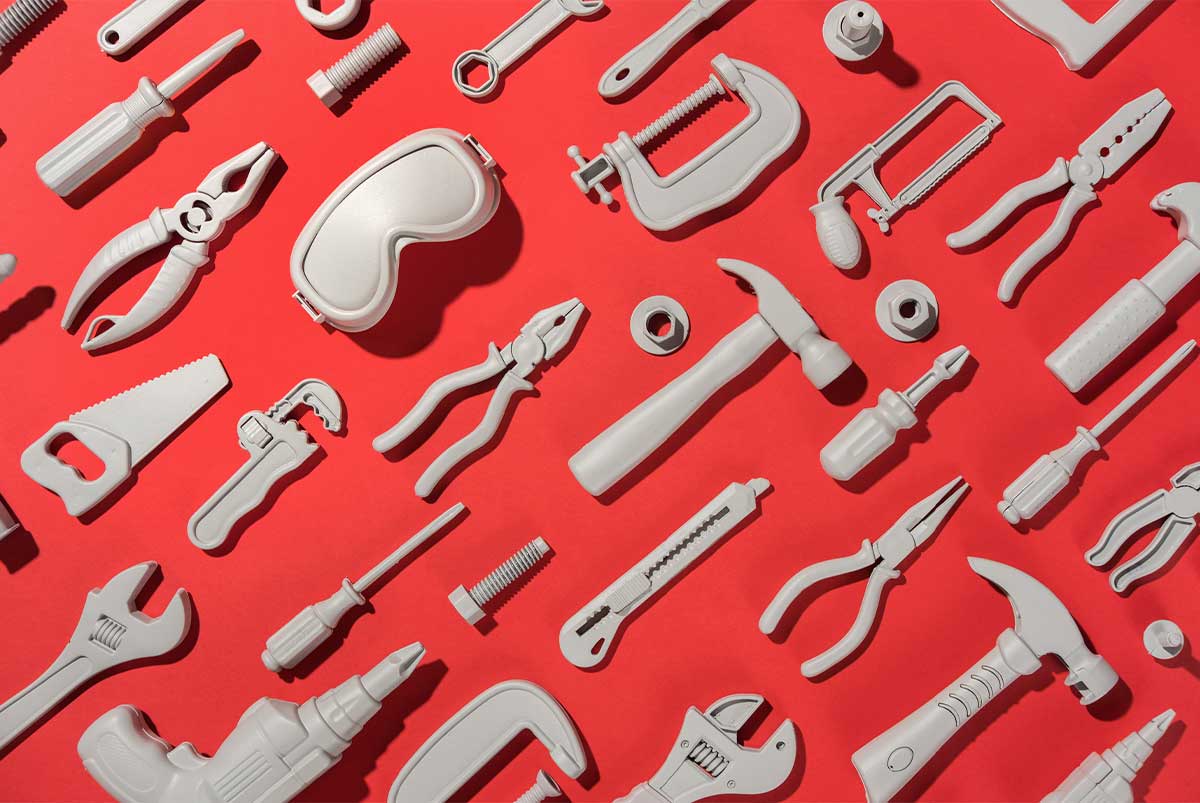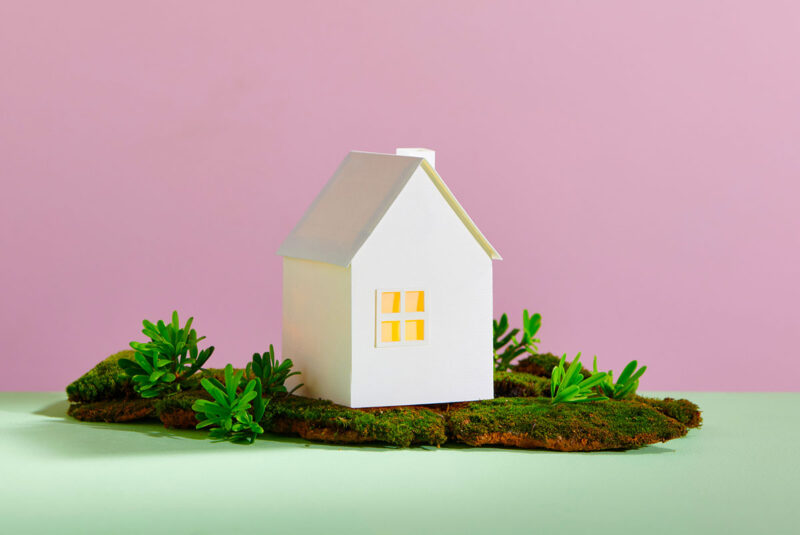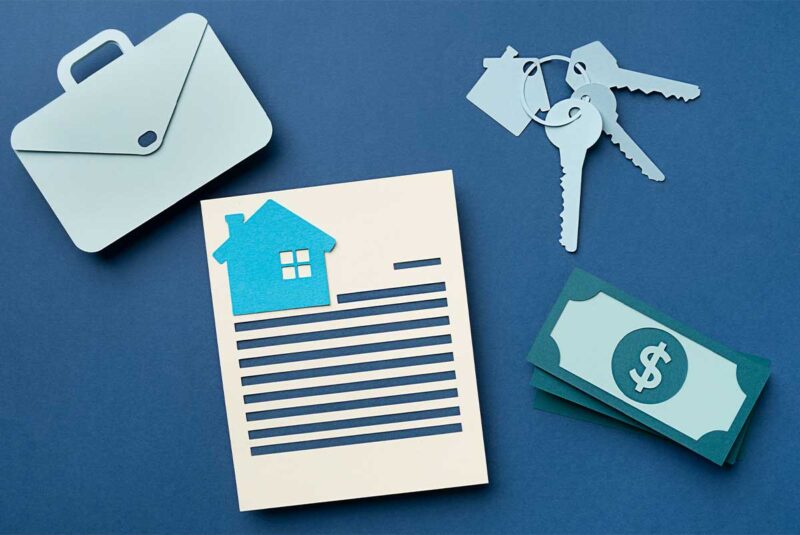Ready To Buy a Home?
Get Approved to Buy a Home
Rocket Mortgage® lets you get to house hunting sooner.
Finding the perfect home is a challenge. And if it feels like you can’t find a home that speaks to you, you may be considering building your dream home instead of buying an existing home that doesn’t check all your required boxes.
Before you start drawing up the floor plan and picking out paint colors, make sure you find a reputable contractor who can help make your dream house wishes come true.
In this guide, we’ll tell you how much it costs to build a new house, how these costs compare to buying an existing home and how to make your new-construction home a little more affordable.
How Much Does It Cost To Build a New House?
Explore Your Mortgage Options
What are you looking to do?
The average cost to build a house will vary based on location, labor costs and the types of materials used.
The first thing you’ll want to do is figure out how much house you can afford. Whether you’re building or buying, it’s always a good idea to create a budget and stick to it.
On average, the cost to build a home in 2022 was around $150 per square foot – around the same as it is for the current 2023 year – with the average cost ranging between $112,226 and $482,381.[1] But keep in mind that these numbers are just estimates. They may not reflect prices in more expensive real estate markets, like San Francisco or New York City.
If you’re wondering why cost estimates are so wide-ranging on new home construction, it’s because houses vary significantly in size, construction costs and quality.
| Average Cost To Build a House | Amount |
| National Average | $297,218 |
| Minimum (800 square feet) | $80,000 – $160,000 |
| Maximum (5,000 square feet) | $500,000 – $1,000,000 |
| Average Cost Range | $112,226 – $482,993 |
Average cost to build a house per square foot
The more square footage you want, the more it’ll cost to build the house. Every square foot adds to the cost of building a home. So if you want a big house, expect to pay more.
Use our table to estimate how much it’ll cost to build your home based on the price of $150 per square foot.
| Size of House | Cost To Build |
| 800 square feet | $120,000 |
| 1,000 square feet | $150,000 |
| 1,500 square feet | $225,000 |
| 2,000 square feet | $300,000 |
| 2,500 square feet | $375,000 |
| 3,000 square feet | $450,000 |
| 4,000 square feet | $600,000 |
Breaking Down the Costs To Build a House
Larger homes usually cost more to build than smaller homes, but the size of a house isn’t the only factor that will influence building costs.
Every decision you make can impact how much it costs to build your house, from the architects and engineers you hire to your choice of flooring and interior finishes. Plan ahead, decide how much you’re willing to spend on each part of the home building process and above all, stick to your budget.
Check out this chart for an approximate breakdown of the different costs associated with building a new home.
Land costs
You can always make changes to the house. And while land can be modified, it can’t be moved. So it’s important to buy a lot in an area you like. Location often determines the value of the land. Land in a rural, undeveloped area will be much less expensive than land in a densely-populated urban or suburban area.
Just like you can take out a loan to buy a house, you can get a land loan to buy undeveloped land or finance the purchase of a vacant lot that’s developed and prepped for construction.
Land loans typically have higher interest rates than traditional mortgages and often require a larger down payment (usually 15% – 25%).
When you’re shopping for land, you should consider more than just the property’s appearance. Research how the land is zoned, the cost of development (if you’re thinking of buying undeveloped land) and any easements that might impact your use of the home.
Because it takes more time and money to transform unimproved land into improved land ready for a move-in ready home, land loans for unimproved land are more expensive and harder to qualify for than land loans for improved lots.
Building permit and regulation costs
Building a home comes with a lot of red tape. Almost everything you do requires you to pull permits. The current average for permit costs is around $500 – $3,000.[2]
When you build a home, some of the permits you’ll need to pull include:
- Basement permit: $1,200 – $2,000
- Electrical permits: $10 – $500
- HVAC permit: $250 – $400
- Swimming pools, patios, sheds and other outdoor improvements: $225 – $2,000 each
Foundation costs
Though it’s easy to forget it’s even there, the foundation of a home is what keeps it from moving. Building a foundation is a major project that can range in cost from $5 – $37 per square foot.[3]
Here are some examples of different foundation types and their average costs:
- Basement foundation: $24,000 – $44,500
- Concrete slab: $7,000 – $20,000
- Crawl space: $8,000 – $24,000
The average cost of building a foundation is $9,117, ranging from $4,044 – $14,342. However, you can expect to pay a lot more if you choose anything besides a slab foundation.
Framing costs
Think of your home’s framing as its skeleton. It gives a home its shape, so home builders can put up the exterior, drywall and roofing. The current typical price range can fall anywhere from $1,353 – $6,867.[4]
Full framing for a 2,000-square-foot, single-family home will cost an average of $14,000 – $32,000. However, your costs can increase if the home is larger or has multiple floors.[4]
Exterior costs
The exterior of a home consists of siding and roofing. As with building materials, siding and roofing come in a few varieties and prices.
The average price of new siding is between $5,000 and $14,050.[5] On average, a new roof can cost $5,000 – $10,000.[6]
Interior costs
The interior finishes of a home consist of the interior surfaces, from the walls and ceilings to flooring and lighting. This is where the costs of fixtures come in.
Interior finishes average anywhere from $50,000 – $100,000,[1] though specialty or custom finishes can easily cost tens of thousands more. For example, pine flooring can cost $4.50 – $10 per square foot, while Brazilian walnut and other high-end hardwood floors can cost anywhere from $11 – $20 per square foot.[7]
You can customize interior finishes for aesthetics (like crown molding) or function (like built-in shelving). But upgrading interior finishes is expensive work that can quickly destroy even the best budgets.
HVAC, plumbing and electrical costs
HVAC, plumbing and electrical systems are essential to making your home a place where you can live comfortably.
Again, you can expect the costs of these systems to increase if you’re building a larger home (more ducts, pipes and wires = more money).
On average, installing HVAC systems will cost $1,500 – $12,500,[8] new plumbing will cost around $8,000 – $12,000[9] and you can tack on another $12,000 – $20,000 for your electrical system.[10]
And none of this pricing includes the fixtures you’ll need to install, such as lights, toilets or sinks.
Additional expenses
The price tag is already well into the six-figure range, and we haven’t even talked about some of the additional expenses associated with building a home.
Do you want to build a fence for your dog or a deck to enjoy your morning coffee? How about adding a driveway or landscaping to boost the home’s curb appeal?
These smaller projects are frequently overlooked – but that doesn’t make them any less important or expensive. Plan on spending between $5,000 and $10,000 for basic outdoor additions like a driveway or landscaping.
And if you want more than the standard build or design, you may need to add a few more zeroes to the final price. Extras can cost you $10,000 or more.
Other considerations when building a house
It’s not uncommon for construction projects to go over budget and miss deadlines. Whether you’re dealing with unanticipated costs or issues stemming from problems in the supply chain or bad weather, many factors can delay the completion of your new home and inflate the cost of building it. For example, a delay could force you to continue paying rent or another mortgage longer than expected.
This is why you should add a cushion to your construction budget – we recommend at least 10% of the estimated price to build the home. That should be enough to handle any surprises, price increases or the consequences of delays. If you think your new home will cost $300,000 to construct, earmark an additional $30,000 just in case.
Is Building a New House Cheaper Than Buying?
The cost of building a new house may be lower than buying an existing home, but that depends on the housing market, building costs and other factors. So it’s hard to say whether it’s cheaper to buy or build a house.
This is especially true when you consider the long-term costs of homeownership, like repair costs, energy efficiency of new homes versus older ones, homeowners insurance premiums and more.
While the cost of new-construction homes might be higher, they usually cost less to insure, have lower energy bills and may be less expensive to maintain.
Costs will likely be front and center when you’re deciding between building a home or buying an existing one. Think about the value of living in a home custom-built to your needs and desires.
Tips for Affording the Cost of Building a New House
Just because your home only exists on a blueprint doesn’t mean you can’t get a mortgage.
Plenty of lenders are willing to finance the construction of your new home. Consider looking into a Federal Housing Administration (FHA) construction loan.
An FHA construction loan is a solid option for borrowers with lower credit scores or less money available for a down payment. An FHA construction loan combines the benefits of a short-term construction loan and a standard FHA mortgage.
If you take out a construction-only loan to finance building your new home, you’ll need to refinance the loan once construction is complete.
A personal loan might be a viable alternative if you’re struggling to qualify for a land loan. Lenders may not want to issue a land loan for a property that needs a lot of work before you can build, but you can use an unsecured personal loan for land to buy any type of land you want – improved or unimproved.
Build a Budget Before You Build Your New Home
Before you build a new home, build your budget. Building a home isn’t an exact science. But if you want the project to succeed, you’ll need to stick closely to your budget, anticipate the unexpected and exercise extreme patience.If you’re ready to build a custom home, explore construction loans that will finance the transformation of your dream home into a brick-and-mortar reality.
Take the first step toward buying a home.
Get approved. See what you qualify for. Start house hunting.
The Short Version
- On average, the cost to build a home in 2023 is $297,218, ranging from $112,226 – $482,933[1]
- The average cost to build a house will vary based on location, labor costs and the types of materials used
- Interior finishes average anywhere from $50,000 – $100,000,[1] though specialty or custom finishes can easily cost tens of thousands more
HomeAdvisor. “How Much Does It Cost To Build A House?” Retrieved July 2023 from https://www.homeadvisor.com/cost/architects-and-engineers/build-a-house/
Angi. “How Much Does a Building Permit Cost?” Retrieved July 2023 from https://www.angi.com/articles/how-much-does-building-permit-cost.htm
HomeAdvisor. “How Much Does A Foundation Or Basement Cost?” Retrieved July 2023 from https://www.homeadvisor.com/cost/foundations/install-a-foundation/
HomeAdvisor. “How Much Does It Cost To Frame A House?” Retrieved July 2023 from https://www.homeadvisor.com/cost/walls-and-ceilings/install-carpentry-framing/
- HomeAdvisor. “How Much Does Siding Cost?” Retrieved July 2023 from https://www.homeadvisor.com/cost/siding/
HomeAdvisor. “Roofing Material Prices.” Retrieved July 2023 from https://www.homeadvisor.com/cost/roofing/
HomeAdvisor. “How Much Does It Cost To Install Hardwood Floors?” Retrieved July 2023 from https://www.homeadvisor.com/cost/flooring/install-wood-flooring/#average-cost-to-install-hardwood-flooring
HomeAdvisor. “How Much Does It Cost To Install Or Replace An HVAC System?” Retrieved July 2023 from https://www.homeadvisor.com/cost/heating-and-cooling/
HomeGuide. “How Much Does It Cost To Install or Replace Plumbing?” Retrieved July 2023 from https://homeguide.com/costs/install-new-house-plumbing-pipes-cost
HomeAdvisor. “How Much Does It Cost To Rewire A House?” Retrieved July 2023 from https://www.homeadvisor.com/cost/electrical/rewire-house/




